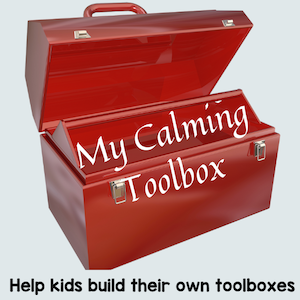|
Feeling anxious, overwhelmed or out of control can be a common experience for many kids at school. To move beyond simply managing anxiety, it is critical to equip our students with coping skills, such as calming strategies that work in the classroom. The increase in anxiety and poor mental health with children has caused us to relook at how we can develop positive self esteem and skills to regulate emotions and behaviors. Social Emotional Learning (SEL) has become a focus in many classrooms recently as a means to provide skills for kids to improve mental health and emotional well-being. As teachers, we must take it upon ourselves to provide calming strategies so that our students can find their inner peace again. Luckily there are SEL strategies that teachers can implement in their classrooms to help students develop lifelong tools for managing stress, regulating emotions, and leading a balanced life. Learning about self-regulation and calming techniques is only a small part of SEL. There are many other aspects to discuss as well, but these will need to be further explored in a later post. Today I would like to focus on helping kids to deal with their emotions by using self-regulation strategies. There are many different calming strategies that can be used, but not all of them work for every child. If we teach a variety of different strategies, each child will have several techniques that they can try. In time, they will know what works well and what doesn't and they will be able to create their own toolkit of strategies. There are many different ways to help a child calm down when he is upset, anxious, or otherwise unregulated, but in order to help him long term, it is important to actually teach him strategies rather than just grab one for him to try in reaction to the unregulated behavior. Every child is unique, so there isn't a one size fits all answer. It is important to explore several different options and find out which ones work best for each person. Here are some examples of calming strategies that might work. Whole Class ActivitiesOne effective way to help kids with regulating and focusing, is to add calming and mindfulness activities into the school day. For example, starting out with a mindfulness circle in the morning and doing some deep breathing and stretching could help prepare everyone for the work ahead. Visualization and focusing on a peaceful or happy place can also work wonders to help alleviate feelings of stress and worry. Taking breaks for stretching and movement are important throughout the day. Body breaks and brain breaks allow kids to de-stress for a short time and prepare their minds for more work. Just like we need to take breaks throughout the day from working, so do kids. Individual calming strategiesSet up a calming corner in an area of the classroom where kids can go when they need a quiet space by themselves to regroup and self-regulate. You might have a few different things in there to help with the refocusing. Maybe you could add some pillows, blankets, stuffed animals, glitter jars, fidgets, books, or other small items that may be comforting. Have an area where music is available with headphones and a comfortable place to sit. Music is often very soothing and can help with relaxing and calming the spirit. Drawing and coloring also work well. Movement is sometimes necessary in order to self-regulate when upset. Try jumping jacks, skipping, going for a walk, delivering a message to another room, or even just pushing against a wall as ways to use physical activities to release the anxiety or upset feelings. Breathing exercises or counting also help for some people. The goal is not only to reduce anxiety during times of distress, but also to enable our students to become familiar with calming strategies they can apply outside of the classroom. When it comes to SEL, teachers have a toolbox full of calming strategies to choose from - so don't hesitate to use them and help kids develop their own toolboxes! Here are some posters that might be helpful for your students. They are available for free for my newsletter subscribers. Click here to get your copy. If you are already a subscriber, you can find them on my Followers Free Resources page. I hope these tips help with dealing with some of the anxiety that is prevalent in our schools today. Next time I will focus on another aspect of SEL. Related Posts
0 Comments
Leave a Reply. |
About Me Charlene Sequeira
I am a wife, mother of 4, grandmother of 9, and a retired primary and music teacher. I love working with kids and continue to volunteer at school and teach ukulele. Categories
All
|

















 RSS Feed
RSS Feed